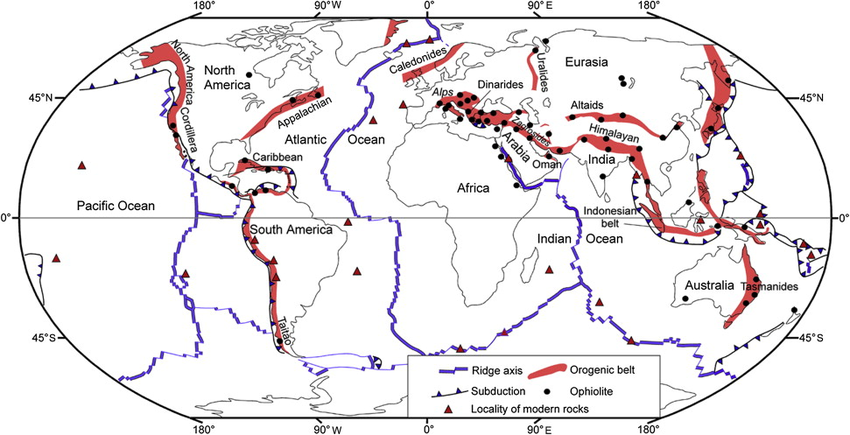
Oh, cool!
Stress is basically how much the rocks are being squeezed, and in which direction. If we can know that, and also know how *strong* the rocks are, we can estimate whether they will break.
But it's super hard to measure... 1/n
Stress is basically how much the rocks are being squeezed, and in which direction. If we can know that, and also know how *strong* the rocks are, we can estimate whether they will break.
But it's super hard to measure... 1/n
https://twitter.com/temblor/status/1485008121382817796
When rocks *do* break (#earthquake!), we can use that to estimate stress. If you know the direction of slip, you can do even better. This even works for earthquakes that occurred long ago, if they left scratches on the fault!
rickallmendinger.net/faultkin
2/n
rickallmendinger.net/faultkin
2/n
Or, if you have a lot of money and time, you can drill into the Earth and measure the orientation of maximum squeezing based on how the borehole deforms.
#boreholebreakouts
3/n
jgs.lyellcollection.org/content/162/1/…
#boreholebreakouts
3/n
jgs.lyellcollection.org/content/162/1/…

We can also estimate how much the vertical stress is at a given depth, because it's basically the load of the rocks above due to gravity. (Horizontal is harder.)
#lithostaticstress
4/n
#lithostaticstress
4/n
We can also estimate incremental stress changes due to #earthquakes and plate movements. Which tells us which areas have been pushed closer to failure, and which moved further away.
Which is super cool, but... 5/n
researchgate.net/figure/Coulomb…
Which is super cool, but... 5/n
researchgate.net/figure/Coulomb…

...it's really not clear if this works for forecasting #aftershocks or future #earthquakes.
(Spoiler: it often seems like no.) 6/n
doi.org/10.1038/s41598…
(Spoiler: it often seems like no.) 6/n
doi.org/10.1038/s41598…
A big reason stress changes aren't that helpful is that we don't know the background stress well.
So: a new measure to estimate orientations of background stress is super helpful!
They use seismic noise - pretty clever! 7/n
nature.com/articles/s4324…
So: a new measure to estimate orientations of background stress is super helpful!
They use seismic noise - pretty clever! 7/n
nature.com/articles/s4324…
However, this still won't give *values* of stress.
The best way to do that? Find a place where you can measure incremental stress *and* it's in a different orientation from background stress. Then, it should be possible to calculate the magnitude of background stress by... 8/n
The best way to do that? Find a place where you can measure incremental stress *and* it's in a different orientation from background stress. Then, it should be possible to calculate the magnitude of background stress by... 8/n
...measuring its orientation before and after the incremental stress is applied.
But these measurements will have to be very precise - usually beyond our measurement accuracy.
Maybe not always, though: 9/n
But these measurements will have to be very precise - usually beyond our measurement accuracy.
Maybe not always, though: 9/n
In some cases, large #earthquakes lead to changes in the stress regime - it flips from one kind of earthquake to another kind, because the incremental stress was enough to flip the relative magnitudes of the principal stresses.
See, e.g. #Tohoku 10/n
doi.org/10.5047/eps.20…
See, e.g. #Tohoku 10/n
doi.org/10.5047/eps.20…
Where else might we find this kind of wholesale stress change? What will it tell us about magnitudes of stress? Looking forward to learning more over time. 11/11
• • •
Missing some Tweet in this thread? You can try to
force a refresh

















